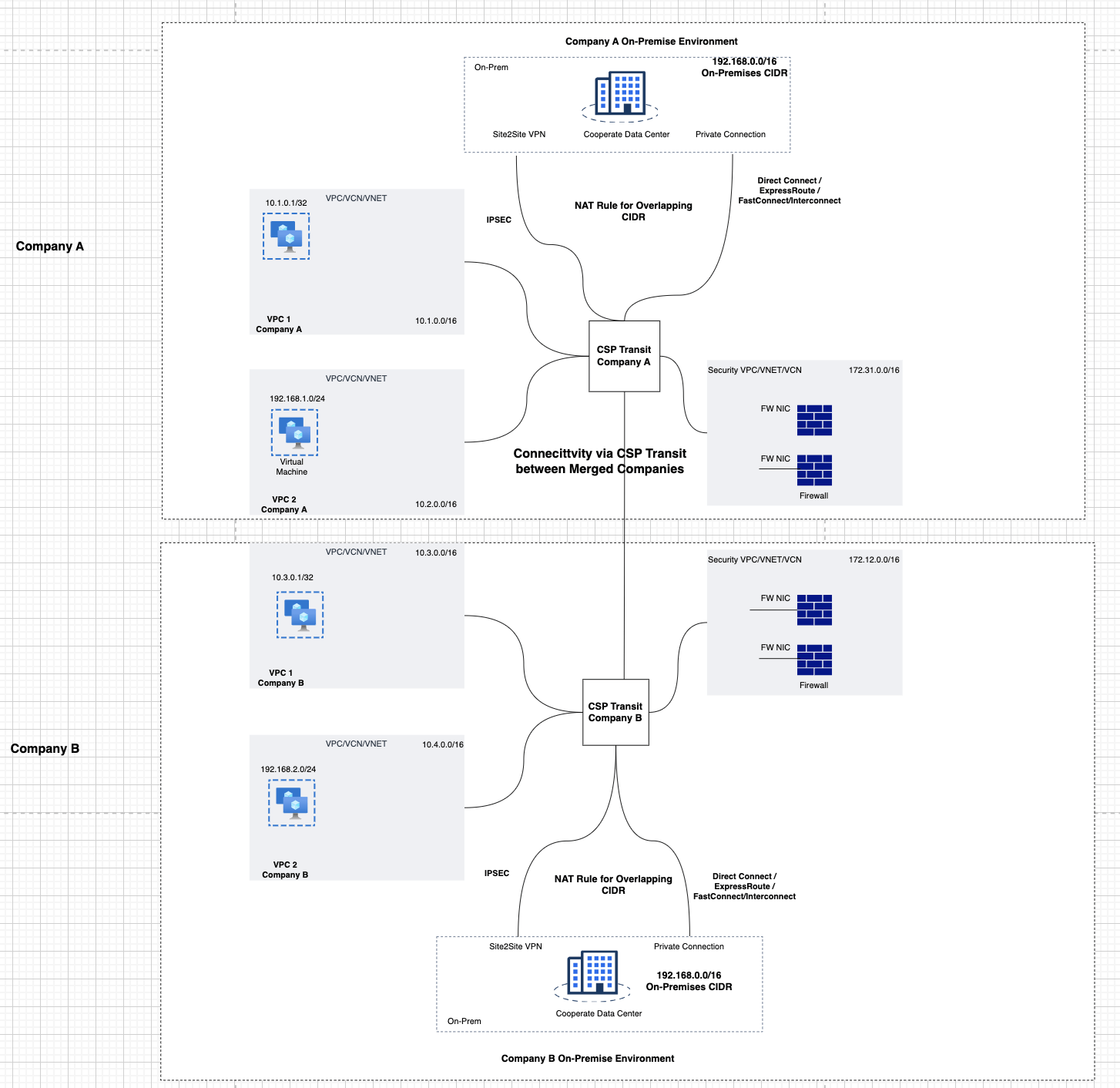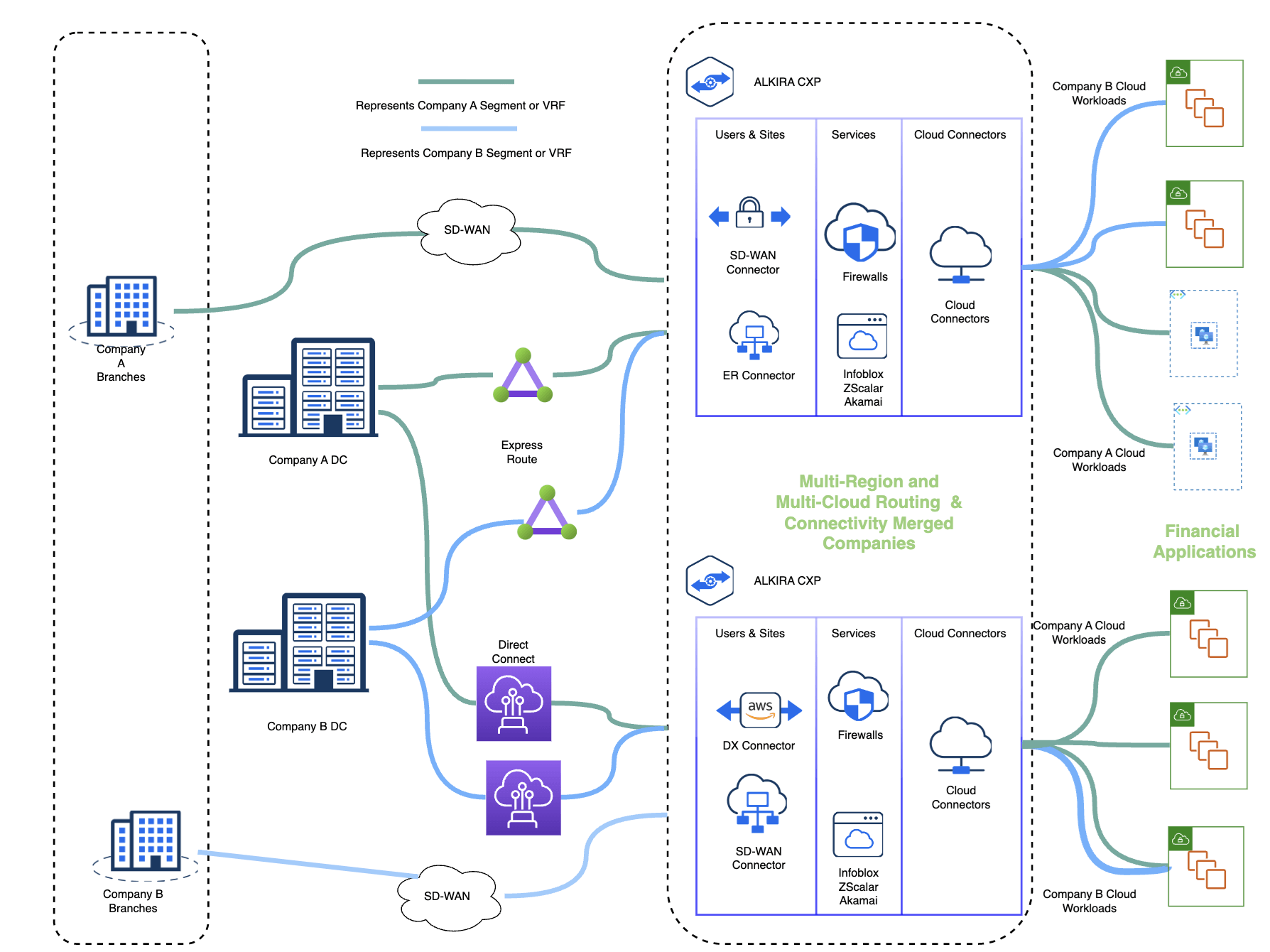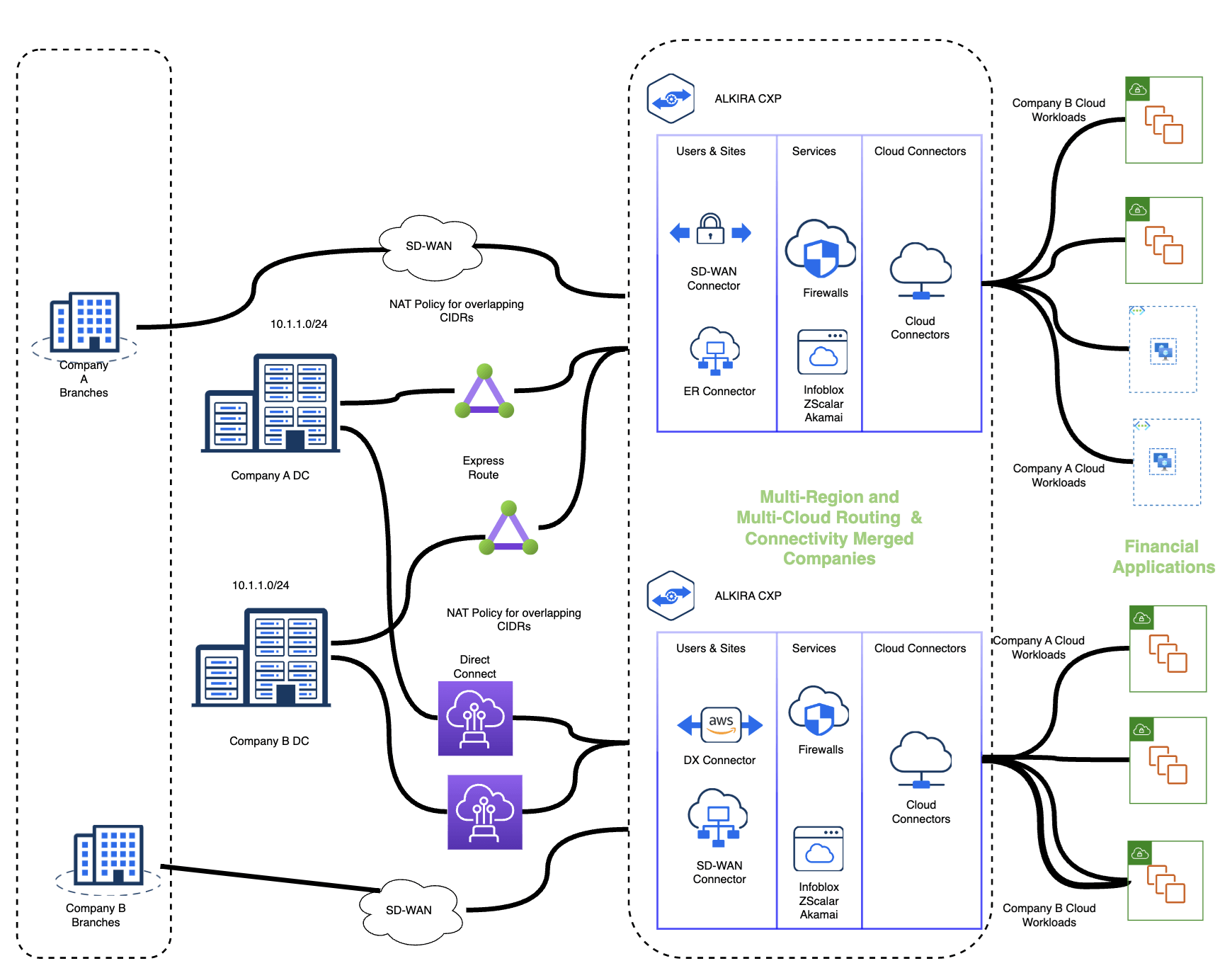
Mergers and acquisitions (M&A) are common in the enterprise world. M&A is a complex process, whether you look at it from a technological, legal, cultural, or organizational perspective.
Here is the list of challenges enterprises face after the merger and acquisition:
Business Challenges
1- CapEx and OpEx Overhead
When two companies are merged, the IT organizations of each company need to think about the increased footprint and how to manage expenses/costs associated with the networking and security infrastructure, which include license costs for different software vendors and networking infrastructure costs.
2- Operational Complexity
With any M&A activity, IT organizations have a challenge regarding what kind of software, hardware, or tools are being used for networking and security needs; this also requires the right skill set to manage the infrastructure. Since two companies could be using different vendors/tools for their IT needs, this creates a challenge for these companies to have the right skill set to manage the infrastructure.
3- Data Integration
Bringing together corporate data from two organizations is one of the most critical and challenging aspects of IT integration during an M&A deal. This process is essential for application migration, maintenance or upgrade activities, data center migrations, and website consolidation.
Technical Challenges
- The most important thing for enterprises after the merger is assimilating email domains, directory services, address lists, calendar sharing, etc., to run a company seamlessly and effectively for all users and give access to up-to-date information.
- When companies merge, the acquiring business has to expand the IT footprint of the merging business, which can uncover weaknesses in its cybersecurity infrastructure.
- With traditional non-cloud mergers and acquisitions of firms, companies may need to move equipment and servers to new office locations and plan to purchase more servers to compensate for the additional employees. Connecting to a traditional on-site server system via VPN could have been faster and riddled with security issues.
Technical Requirements
The following requirements can be summarized from the challenges mentioned above:

Figure 1: Connectivity between Merged Companies for On-premise and cloud environments using CSP (Cloud Service Provider) Transit
Connectivity Between Merging Enterprises across Multiple Clouds
Merging Enterprise companies have cloud and hybrid environments that connect applications to the users. Depending on the Cloud Service Providers being used for hosting the applications, these companies need to consider connectivity options for seamless communication.
Overlapping IP addresses
Before mergers, these companies were designed independently, and network administrators used the private RFC 1918 space to build these networks; hence there is a high possibility that the IP scheme used in the networks is the same. This requires a solution to overcome this overlapping IP address problem.
Security
After an M&A, one of the requirements is to provide security for the traffic flows between the two enterprises. This requires considering how to insert firewalls to provide security and considering different cloud networks across CSPs. Another requirement would be to consolidate and cost reduction for the security footprint.
Shared Services
Merging entities with IT services such as Microsoft AD, CDN, DNS, NTP, or DHCP services are hosted in a shared VPC/VNET and must be accessed from on-prem and their third-party vendors. When the merger happens, network connectivity for these services is required.
Alkira Solution for M&A
Alkira Cloud Networking is the first global unified multi-cloud network delivered as a service. Alkira seamlessly solves all the network requirements and challenges mentioned above for merged entities.
Alkira allows M&A customers to use a One Architecture approach to quickly onboard their cloud workload (VPCs, VNETs, VCNs etc.) to the Alkira Cloud Exchange Points (CXPs) and consolidate or optimize their infrastructure footprint. Alkira CNaaS offers the same approach for connecting on-premise infrastructure to Alkira CXPs by leveraging various methods, including AWS Direct Connect, Azure Express Routes, and IPsec/SD-WAN Connections from their DCs and branches.
Alkira’s solution also allows customers who would like to inspect the traffic between on-premise to cloud or multi-cloud environments to use a policy-driven framework to inspect traffic as per the requirements.

Figure 2: Alkira Topology showing connectivity options using multiple segments for Merged Companies

Figure 3: Alkira Topology showing connectivity options advanced NAT capabilities for Merged Companies
Alkira Solution Benefits
Segmentation
Alkira can provide isolation of workloads and communication for merging enterprise companies. Traffic across segments can be inspected as well. Since a segment represents a unique routing and policy space, maintaining isolation becomes seamless for customers. Merged companies can isolate workloads by using different segments on the Alkira CXP.
Refer to this blog for more details about cloud network segmentation
Seamless Firewall Integration
Alkira provides seamless integration with vendors like Fortinet,Check Point and Palo Alto or traffic inspection for any type of traffic flow. Merged entities get a significant advantage as they don’t have to bring up firewalls depending on traffic flow. Also, functionality like autoscaling comes as part of the solution, which helps to scale up or down depending on the requirements.
For more details, please refer to this multi-cloud inline traffic inspection blog.
Advanced Overlapping IPs Solution
The Alkira CXPs or cloud exchange points form a networking fabric in the cloud that you can connect to on-premise sites like SD-WAN or standard IPsec sites or private connectivity options such as Direct Connect and Express Route connect your cloud networks using native constructs. Once these on-prem sites and cloud networks like VPC or VNets are connected to the Alkira CXPs – where overlapping IP spaces are allowed, Alkira’s policies can be applied network-wide to them, and part of the policy is NAT.Hence any resources which have overlapping IP addresses can be handled via NAT.
For more details, please refer to this blog about solving overlapping IPs in a multi-cloud environment.
Resource Sharing
Using the Alkira solution, customers can use the Resource Sharing feature to handle the shared services use case. Resource sharing allows them to choose specific resources by identifying the network prefixes to be shared across two segments and enabling additional capability to allow an inline firewall to inspect the traffic for Resource sharing.
For more details, please check out our blog on resource sharing.
Automation with Terraform
Network Infrastructure deployment at a large scale requires automation, and Alkira helps to solve this, wherein the customer can use terraform to provision the network infrastructure for Alkira.
Conclusion
Alkira Cloud Area Networking infrastructure provides companies going through M&A activities with an easy and secure solution with all technical requirements.
Schedule a demo today to see how Alkira can help accelerate your Mergers and Acquisitions (M&A) made easy with Cloud Networking as a Service.

Ahmed Abeer is a Sr. Product Manager at Alkira, where he is responsible for building a best-in-class Multi-Cloud Networking and Security Product. He has been in Product Management for more than ten years in different big and small organizations. He has worked with large enterprise and service provider customers to enable LTE/5G MPLS network infrastructure, automate Layer 3 Data Center, enable Next-Gen Multi-Cloud architecture, and define customers’ Multi-Cloud strategies. Ahmed’s technical expertise in Cloud Computing and Layer 2/Layer 3 network technologies. Ahmed is a public speaker at various conferences & forums and holds a Master’s Degree in Computer Engineering

Deepesh Kumar is a Solutions Architect and product specialist in the computer networking industry with over 8 years of experience. He currently works as part of the post sales team at Alkira and focuses on working with customers to design and deploy the Alkira solution. Prior to working here, he worked at Viptela which was acquired by Cisco Systems. He holds a masters degree from San Jose State University.



